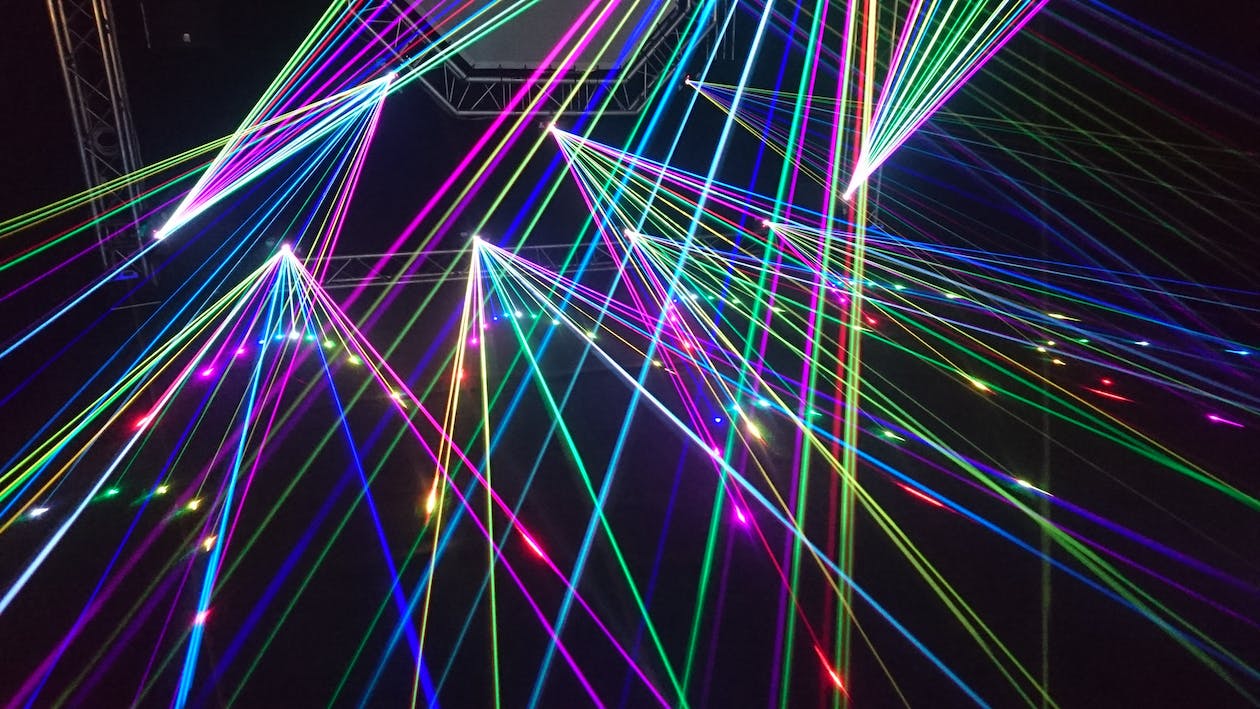After Theodore H. Maiman invented the laser in 1960, it has opened up a whole spectrum of varied applications in many industries, proving earlier people’s belief of light mystifying powers. Since then, it has brought amazing uses in science, medicine, electronics, information technology, entertainment, and music. In fact, the laser also powered a new electronic musical instrument, the Laser Harp, in which its strings are substituted by light, providing a magnificent spectacle while producing expressive sounds.
What is a Laser Harp?
The laser harp is an electronic musical instrument that makes uses of laser beams in which the player blocks to produce the sound. Two individuals are claiming to have created the innovative instrument, Geoffrey Rose and Bernard Szajner, which stirred debates in patent issues. Regardless of who invented the instrument, the laser harp is deemed to originated in France.
Jean Michel Jarre, a French producer, composer, and musician, has been the most renowned laser harp user, featuring the instrument nearly of all his concerts and performances since 1981. Since then, engineers continuously improved and are still in the works in developing the instrument, both in functionality and aesthetics.
Laser Harp Types
Laser harps can either be framed or unframed (infinite beam) style depending on their built.
Framed Style. This laser harp style is constructed to look like a classical harp. Low-powered lasers and photoresistors or photodiodes are used to substitute the strings inside the harp’s frame. Based on the complexity and the capacity of the software and the MIDI hardware used, the number of lasers present can vary, ranging from one to 32, or even more. Meanwhile, the size may also change from a normal-sized to room-sized harps.
Unframed Style. Also called the infinite beam laser harp style, the unframed design removes the boundaries set by a classical harp’s structure. This frameless type usually utilizes a single laser, which is then diffused into a fan-like pattern, and then functions by mirroring the light back in a photodiode. The first models of this style incorporate the controller, sensor, and projector in a single box, but the latest ones provide more freedom by separating and allowing them to be placed independently.
Laser Harp Innovations
As the years passed, more changes were made to develop the laser harp. In 2005, a multicolored laser harp generator became the center of discussions and was soon displayed at a German conference.
Three years later, Italian electronic and software engineer Maurizio Carelli conceived and devised a bi-colored laser harp, adding the color red to the initial green laser harp. The former was assigned for chromatic notes, while the latter was allocated for diatonic notes, allowing players to have a polyphonic experience. Two years later, he also created the first full-colored laser harp generator from an ILDA source.
Now, with the advancement in its software system, players can modify the color, produce vibrating beams, add visual effects, and trigger sound modulation through the use of their hands.
How The Laser Harp Works
Three parts make up a laser harp, namely the sensor, projector, and controller. The first two are situated facing each other, while linked to the controller. The latest models provide more versatility as it now allows to place the parts in any way a player desire compared to earlier designs that integrate the three components in a single box. The controller is basically a MIDI controller that transmits MIDI signals.
As it is, infinite beam style laser harps are more complicated to set up than the framed style. But, in return, it gives more adaptability and flexibility to the user. In a frameless laser harp, the projector sends fan-like beams, which the player will block using his hands. As he does so, the blocked light will send in signals to the controller. The information will then be transferred to the sampler, synthesizer, or sound card to sound the corresponding note.
High-powered laser breams are often used for functionality as it allows the sensor to detect which beams are blocked quickly. However, they can also be used for aesthetics. While 20 mW laser is enough to be visible in the air, it may need 500 mW or more to get impressive visual effects and offer a magnificent spectacle to the audience. However, with such power, laser harp players wear protective gloves and glasses for their protection against the skin and eye damage.
As the advancement of technology continues and with the music enthusiasts’ creativity, we can expect that more developments in the laser harp and more new musical instruments to come in the future.

